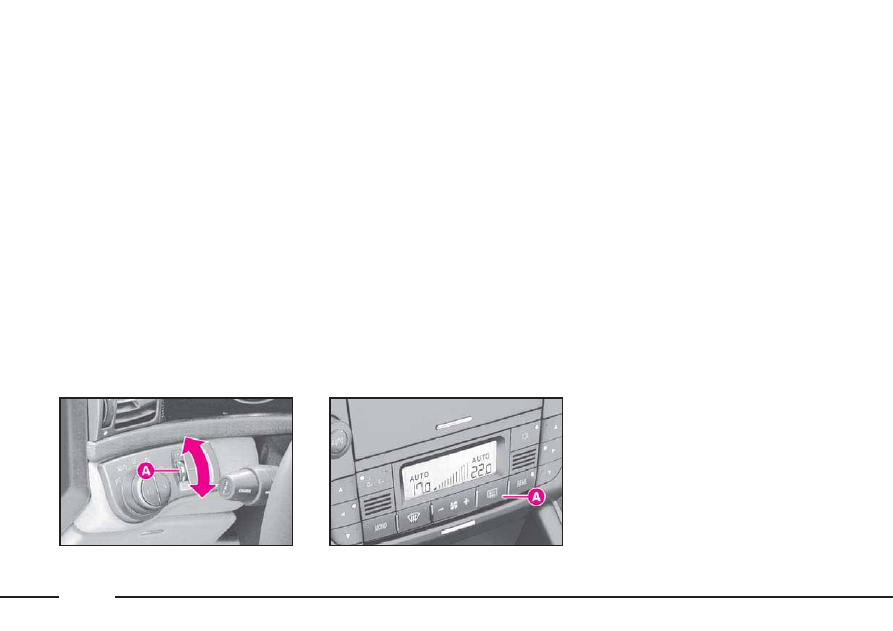Lancia THESIS. Service Manual - part 11

172
INSTRUMENT
DIMMER (fig. 127)
Turn ring A upwards or downwards
when the outside lights are on to re-
spectively decrease or increase instru-
ment brightness.
HEATED REAR WINDOW
(fig. 128)
Press button A to switch the heated
rear window on/off. The led on the
button will come on.
The heated rear window will be au-
tomatically switched off after about
20 minutes.
The electrical rearview mirror
demister will also be switched on au-
tomatically.
fig. 127
L0A0202b
fig. 128
L0A0198b
FUEL CUT-OFF SWITCH AND
CIRCUIT BREAKER
The car is fitted with two safety
switches that come into operation in
the case of an accident to block fuel
supply and power, thereby stopping
the engine and the car electric utili-
ties. It also prevents fuel spilling if the
lines are broken in the accident or
sparks and flashover due to electric
component damages.
After the crash, remember to turn
the ignition key to STOP to prevent
the battery running down.